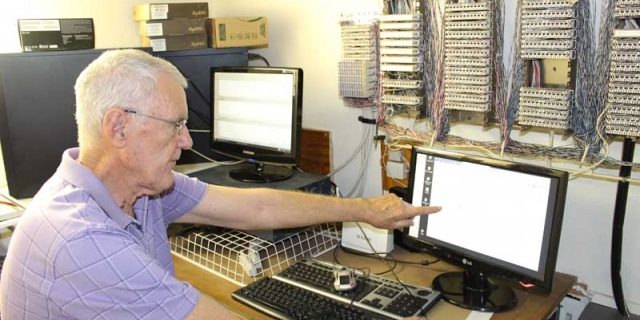South African Internet pioneer Mike Lawrie has built an internal ADSL network at the retirement centre where he lives, which offers residents unlimited Internet access at R40 per month.
Lawrie is known for establishing the first Internet network in South Africa at Rhodes University in 1988.
His passion for networking and the Internet never subsided, and when he moved into the retirement village in Pretoria and noticed the need for affordable broadband access, he stepped in to help.
The centre had an established copper network which supported its PBX system, which means an ADSL network made sense.
Lawrie said he tested the viability of using Wi-Fi, but it proved to be challenging to create stable wireless connections to all homes.
He put forward a proposal for R25,000 to build the ADSL network, and the centre’s board was so impressed that they gave him R50,000 to build the best network possible.
The home owners’ association covered the initial capital cost of the network, while residents cover the operational cost.
Lawrie put the money to good use, and the new ADSL network went live on 1 April 2009.
It now provides uncapped 20Mbps broadband connections to residents for a fee of between R19 and R40 per month.
The network also provides unlimited free Wi-Fi access in communal areas and an “Internet café” with free Internet connectivity.
What the network looks like
When the complex was built, copper lines to each unit, which were used by a PBX system, were installed.
Lawrie connected the copper pairs of the residents who wanted ADSL to a DSLAM (Digital Subscriber Line Access Multiplexer).
A DSLAM is used to receives signals from multiple customers’ DSL connections and puts the signals on a high-speed backbone line using multiplexing techniques.
He then installed a Unix server to serve their email, PPPOED, radius, HTTP, and traffic measurement needs. He also runs a media server on the network.
These servers are connected to a 40Mbps Afrihost VDSL line and router, with a 400GB capped account which provides unlimited use between midnight and 18:00.
The copper lines from the DSLAM are connected to ADSL routers in the houses of the residents, like any Telkom DSL user who connects to Telkom’s DSL network.
The users now have stable 20Mbps ADSL connections into the Internet, with a backhaul capacity of 40Mbps.
The photos below show the network, including the DSLAM, the cross-connect blocks, and the two servers.
How much it costs
The price for a broadband service at the retirement village ranges between R19 (base cost) and R40 (maximum price) per month, depending on the data usage.
High-end users, including a 90-year-old man, consume between 40GB and 60GB per month. Low-end users consume less than 10GB per month.
The data use of each user is tracked in real time and subscribers can view their usage through a custom portal.
Even at the low prices, the network is running at a profit. Lawrie joked that he cannot reduce prices fast enough to get closer to their cost price.
He said the network traffic never gets close to 40Mbps and that the traffic peaks are far closer to 10Mbps – meaning there is ample backhaul network capacity to spare (as shown in the network graph below).
Lawrie said the residents are extremely happy with the service and are enjoying the freedom of unlimited Internet at an affordable price.

















